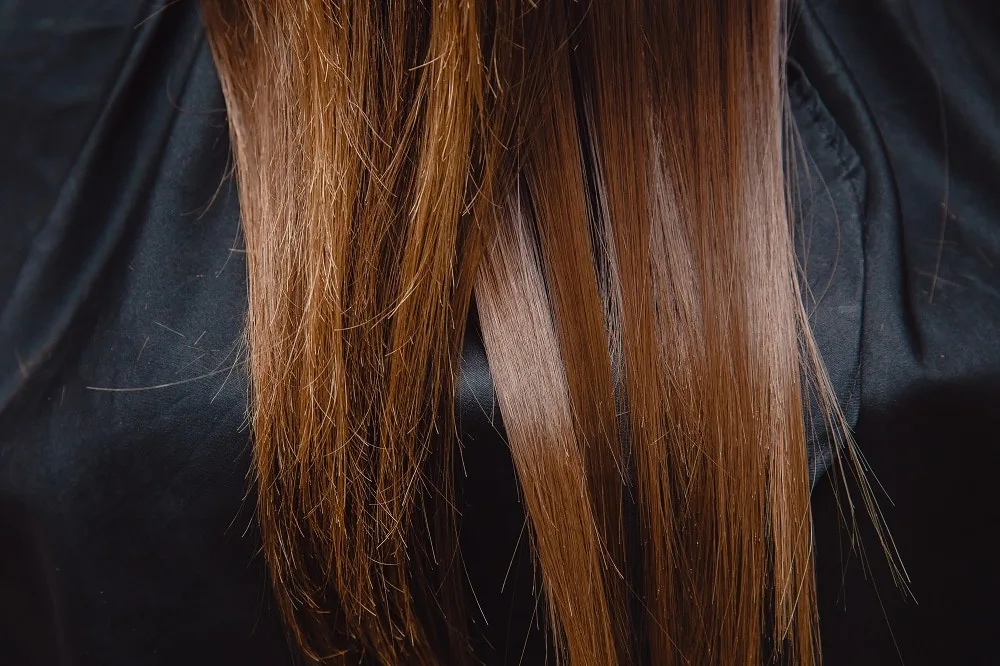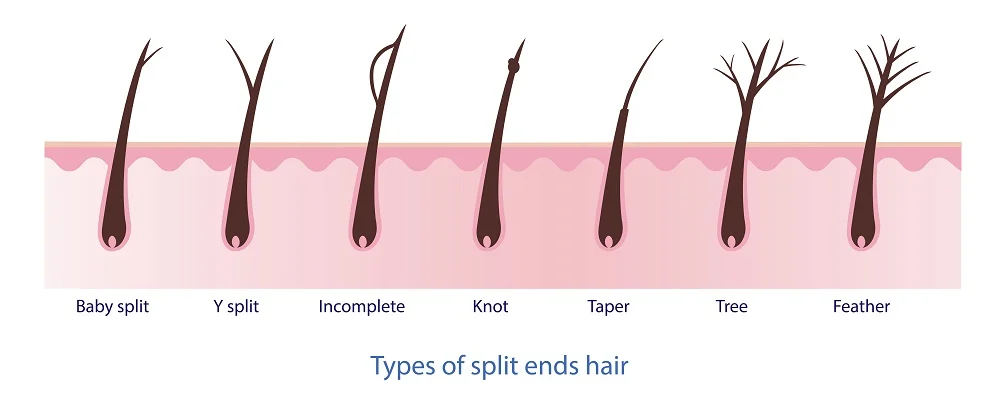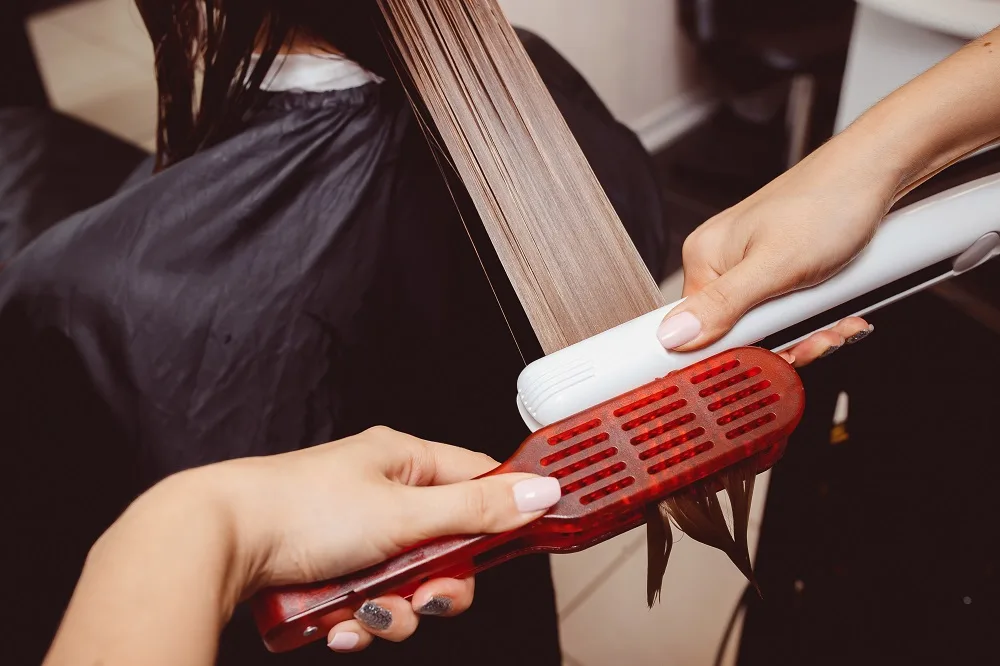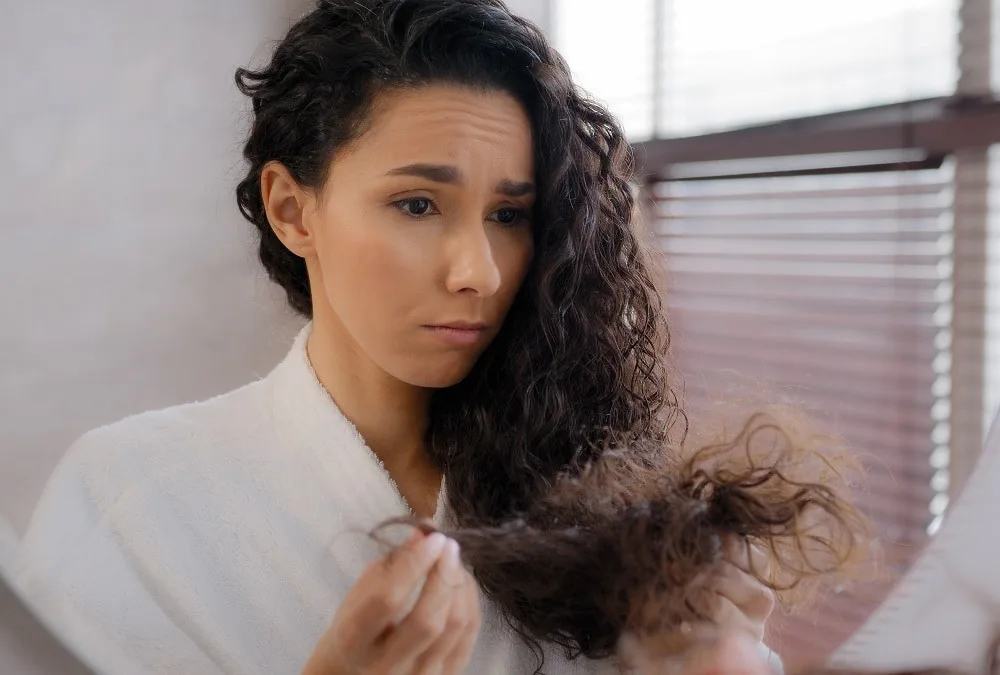The state of your hair end says a lot about the health of your hair. Most people will either have splits or healthy ends. Split ends vs. healthy ends, how do you differentiate the two?
Read on as we delve into what splits look like and how you can tell them apart from healthy ends. We also detail effective ways of identifying and getting rid of split ends.
HIGHLIGHTS: Differences Between Split Ends and Healthy Ends
- The state of hair ends indicate hair health.
- Split ends and healthy ends can be differentiated by appearance, texture, elasticity, and porosity.
- Healthy ends are smooth, uniform, soft, and elastic while split ends are frayed, lackluster, rough, and brittle.
- Causes of split ends include harsh chemicals, hot styling tools, tight up-dos, hair coloring, and diet.
- The best way to get rid of split ends is by trimming, treating hair gently, using a keratin treatment, and eating a balanced diet.
- Split ends do not prevent hair growth but can affect the overall health of hair.
- Maintaining healthy hair involves minimizing heat styling, using hair-friendly products, and consuming a balanced diet.
| Topic | Split Ends | Healthy Ends |
|---|---|---|
| Appearance | Frayed and lackluster | Smooth and uniform |
| Texture | Rough | Soft |
| Elasticity | Less elastic | More elastic |
| Porosity | Dry and porous | Less porous |
Split Ends vs. Healthy Ends: How To Identify?
Do you have split ends or healthy ends? Some of the factors you can use to determine whether you have healthy ends include:
Appearance

You can tell whether your hair has healthy or split ends by its appearance. Healthy ends are smooth and uniform from the roots to the ends, while hair with split ends looks frayed and dull.
You can also have hair that’s healthy along most of the shaft, but it loses its smoothness and uniformity towards the ends due to splits.
Splits disrupt your curl definition if you have curly hair. Curly hair with splits appears straighter towards the end and straighter hair flips up at the end. In contrast, healthy ends have the exact curl definition as the rest of your hair.
Texture
Split ends have a different texture compared to healthy ends. Healthy ends feel soft, while splits have a rougher texture. The roughness comes from a lack of moisture in these ends.
If you moisturize your hair constantly, but the ends remain stubbornly rough and dry, it’s a clear sign you’re dealing with damaged hair with many splits.
Elasticity
Elasticity in hair refers to how far it can stretch before returning to its standard size. All hair types have a level of elasticity, which is often noticeable in wet hair. In healthy hair, elasticity prevents breakage. Therefore, healthy ends are elastic.
On the other hand, split ends have low elasticity. They easily break when stretched because these ends are dry and brittle.
Porosity
Porosity is the ability of hair to take in and hold moisture. While genetics can affect your hair’s porosity, split ends can also influence it.
Split ends are more porous due to the damaged cuticle. Healthy hair, on the other hand, takes moisture more slowly and loses it more slowly, keeping your strands moisturized for longer.

Split ends come in the following forms:
- The basic split indicates that the components of your hair shaft are starting to separate. You can nourish your hair at this stage to prevent these split ends from worsening and going further along your hair shaft.
- The mini-split is similar to the basic split. It forms a small Y indicating the beginning of a split end.
- The fork in the road occurs when your hair ends have separated into at least three smaller strands. Such splits indicate extensive damage to your hair. Deep conditioning will help protect your hair.
- The tree split occurs when one hair strand develops “branches.” Most of these branches are on one side of the hair strand, indicating that the cortex cells of your hair are separating.
- The candle split occurs when the hair ends become significantly thinner than the rest of the strand. When this happens, your hair could be at risk of other types of splits.
- The knot split is prevalent in curly hair. It happens when the hair tangles and forms a knot, resulting in breakage when you comb.
What Are the Reasons That Causes Split Ends?
Split ends occur when the hair suffers damage. This damage can occur due to several reasons, among them:
- Failing to use conditioner on your hair
- Exposing your hair to harsh chemicals
- Rubbing your hair dry with a towel
- Regularly using hot styling tools, especially at a high temperature
- Keeping your hair in tight up-dos
- Wearing weaves and hair extensions
- Coloring or perming your hair
- Brushing your hair too much
- Weather conditions that dry out the hair
- Chemical treatments
- Your diet and lifestyle
How To Get Rid of Split Ends
If you’ve determined that you are dealing with split ends, the next step is to get rid of these ends and restore your hair’s health. The steps to get rid of split ends depend on the severity of the damage.
Trimming

Trimming is the best way to get rid of split ends. But you should trim it carefully and with the right tools to prevent causing more damage to your hair. Use hair scissors since regular ones can cause splits in healthy hair.
Ensure your hair is dry before you start trimming. Part it into small sections and point cut into each section vertically instead of horizontally. If you do not wish to take off any length from your hair, you can remove split ends through dusting.
In this process, you twist the affected ends in half-inch sections. The split ends will stand out from the hair, and you can cut them with small hair scissors. It’s advisable to visit a professional for a hair trim.
Treat Your Hair Gently
Sometimes, your hair develops split ends because you expose it to much friction. You can prevent splits from your hair by brushing it gently with the right tools or air-dying it instead of vigorously rubbing it with a towel.
Other ways to prevent splits include minimizing heat styling or wearing a quality heat protectant to shield your hair.
Keratin Treatment

Keratin treatments are a go-to solution when you want to conceal split ends. These treatments work by restoring keratin, a component of natural hair. Keratin is responsible for maintaining the structural integrity of your hair.
Keratin treatment prevents splits from going deeper into the hair shaft, but they do not eliminate them as effectively as trimming.
Eat a Balanced Diet
The food you eat influences your hair’s health. If your food lacks essential vitamins and food groups for healthy hair growth, you’ll deal with split ends for a long time.
The key is to ensure your diet has the right nutritional content to support your hair goals. Work with a certified nutritionist to determine your dietary requirements and how they can contribute to your healthy hair journey.
Does Split Ends Prevent Hair Growth?

Split ends do not prevent hair from growing. Hair grows from the root near the scalp, extending towards the ends. What happens at the ends of the hair won’t affect what happens at the root.
Hair grows from the root at the base of the hair follicle. The growth occurs in three stages, anagen, catagen, and telogen.
- Anagen – This is the active growth stage and lasts 2-6 years.
- Catagen – Hair stops growing during this transition phase. This stage lasts 2-3 weeks.
- Telogen – Hair falls out during this stage. This phase lasts 3-4 months.
Splits do not influence the anagen phase and, therefore, can’t affect hair growth.
That said, split ends can affect the overall health of your hair. They can continue spreading throughout the hair shaft up to the roots.
When the split end reaches the root of your hair, it causes it to thin and become more brittle and damage-prone. Snipping the split ends regularly minimizes the damage your hair suffers and helps maintain healthier strands.
You can grow your hair faster through other helpful care practices. These are eating a healthy balanced diet, taking supplements and vitamins to help hair growth, investing in a silk pillowcase or bonnet to minimize friction, and protecting your hair when heat styling.
So, How Do You Identify and Fix Splits?
You can tell whether you’re dealing with split ends vs. healthy ends based on your hair’s texture, porosity, elasticity, and appearance. Healthy ends are soft, smooth, and lustrous, while splits are rough, lackluster, brittle, and frayed.
Fortunately, you can maintain your healthy ends by minimizing heat styling, using hair-friendly products, and consuming a balanced diet.
